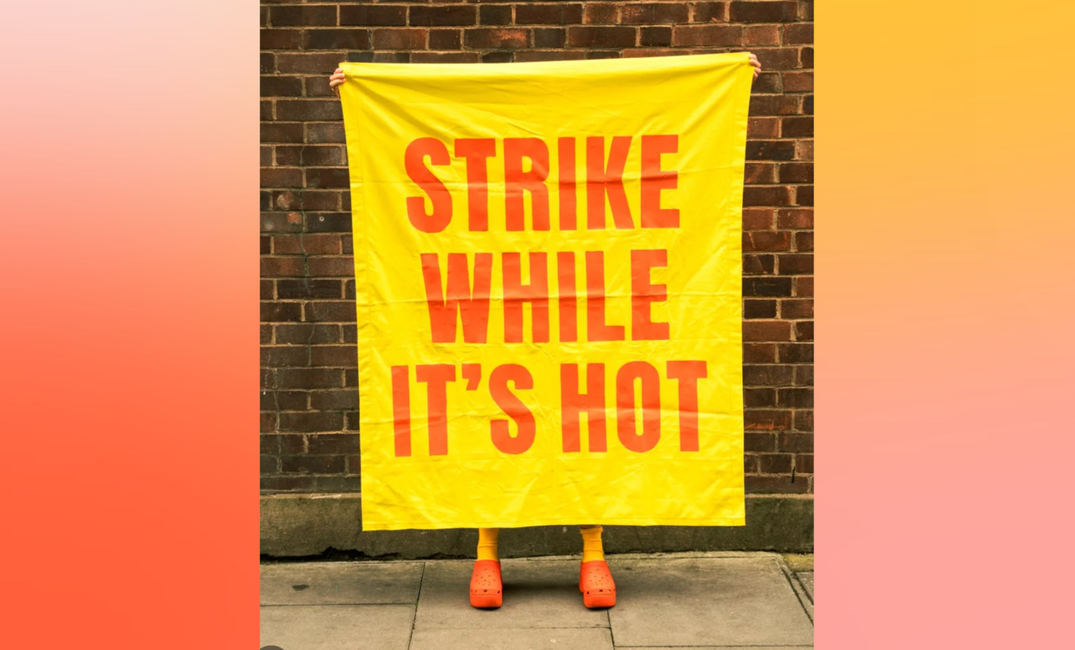Rising temperatures affect us all and it’s time to do something about it.
Jemima Elliott
It’s fair to say we have all felt the heat in recent years. Record after record has been broken by increasingly hot temperatures, and it comes as no surprise that June 2025 was the warmest month on record for England. A new report by the Met Office highlights how ‘extreme weather has become increasingly commonplace’ with ‘our climate in the UK [...] now notably different to what it was just a few decades ago.’
But how is this impacting us in our everyday lives? One area where we feel the effects the most is in our workplaces.
According to a 2024 report by the World Health Organisation, ‘heat stress is the leading cause of weather-related deaths’ with an estimated 61,672 heat-related excess deaths occurring in Europe in 2022. Many people have illnesses or chronic conditions that are exacerbated by the heat - including PoTS, kidney disease and cardiovascular disease - while others find their medication becomes less effective in the heat or makes them more sensitive to the heat and sun, including some antidepressants.
With rapidly rising temperatures comes increasingly frequent workplace injuries as a result of heat stress. Europe and Central Asia have had the greatest increase in excessive heat exposure, with a 17.3 per cent increase between 2000 and 2020 (double the global average increase of 8.8 per cent) and heat-related workplace injuries increasing by 16.4 per cent between 2000 and 2024. The UK Government is aware of these issues, as is made clear by its recent medical press releases, but has so far only promoted individual actions to stay cool rather than placing more frequent heatwaves and the heath-issues that come along with them in the wider context of the climate crisis. That’s where the Heat Strike campaign is trying to change things.
Liam, a 32-year-old climate campaigner, shares how the extreme heat experienced in 2022 saw a surge of people signing up to climate action groups such as Extinction Rebellion. At the time, there wasn’t the capacity nor the infrastructure post-pandemic to capture this energy for action. Now, Heat Strike is preparing for such moments of mobilisation by preparing workers to strike when the temperature reaches 36 degrees Celsius.
The Heat Strike campaign has three core demands for the government: set a national maximum working temperature, put in place a heat wave furlough scheme and make a climate action plan. Behind Heat Strike is a strong coalition of trade unions including the TUC, climate organisations such as Greenpeace, Green New Deal Rising and Friends of the Earth, and disability rights groups. Liam, who campaigns with Heat Strike, sees this as an opportunity to bring people together based on a shared experience: ‘we’re cooler together.’
People in all industries have stories about how they have been affected by recent heatwaves at work - from hospitality to childcare to education to construction. Ellie, a 28-year-old occupational therapist, has seen how the heat affects health-workers and their patients first hand. ‘It feels like the speed at which you can work is much slower,’ she says, ‘however due to ongoing pressures within hospitals it does not feel like you can allow yourself the extra time that you need. What is particularly worrying is the structural issues of the building (like many NHS hospitals that need increased investment to maintain) such as the block my ward is on where there are heating pipes that are not working properly and have been on despite the extreme heat. This is a concern that has been raised many times but no solutions have happened that have had a lasting effect.’
This isn’t just affecting healthcare workers, however, as Ellie highlights the effect extreme heat has on patients: ‘On my ward there are people recovering from some quite serious physical injuries which makes them vulnerable to infection. Increased heat increases chances of dehydration and I think recovery is made much more difficult in the extreme heat.’ Longer recovery times will inevitably cost more money and increase waiting times, so creating cooler hospital environments is not only a health and safety issue but a cost-saving initiative too.
For young people in education, the summer is the dreaded exam and deadline season, but is also now becoming a dangerously hot time of year. Taking exams in extreme heat poses risks not only to students’ safety but also to their grades as high temperatures negatively impact concentration and memory. Questions have to be asked whether the climate crisis will force exam season to change completely and what a heat-adapted education calendar might look like.
A heat wave furlough scheme, the second of Heat Strike’s demands, could be particularly valuable for those in less secure employment - such as on zero hour contracts, gig work, and the self-employed. In industries like hospitality and retail where lower paid zero-hours contracts are common, young people make up a disproportionate amount of the workforce. Workers aged 16-24 make up around 10 per cent of the UK’s workforce but around half of workers in some hospitality roles, including waiters, bar staff and coffee shop workers. In the retail industry, people aged 16-29 account for 25 per cent of the workforce. A furlough scheme of this kind would allow young workers on zero hour and insecure contracts to avoid working in harmful temperatures without worrying about losing wages and alleviate some financial pressures on small businesses. ‘People shouldn’t have to work in dangerous conditions just to get by,’ Liam adds. ‘With the furlough scheme they could miss a day of work and afford to do that. It’s not ordinary working people who have caused the crisis we’re in. Major fossil fuel companies have caused this.’
While there is currently no maximum working temperature, workers in the UK do still have a legal right to leave an unsafe working environment under Section 44 of the Employment Rights Act 1996. However, this is vague and little known. Having a maximum working temperature would not only make these safety parameters clearer but would ensure workers and employers have to monitor temperatures in their workplaces. This issue is gaining prominence amongst a variety of movements - workers’ rights, climate justice, disability rights. Rising temperatures affect us all and it’s time to do something about it.
Thanks for reading our article! We know there's power in people and really appreciate everyone who reads our work.
Give us a follow on Instagram and TikTok, and join our Whatsapp Channel to find out how young people are engaging in politics.

